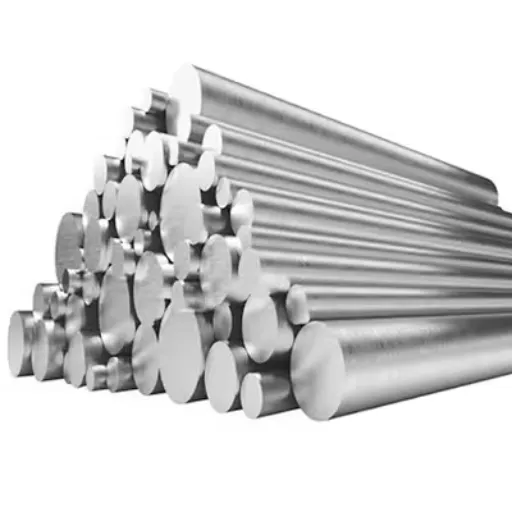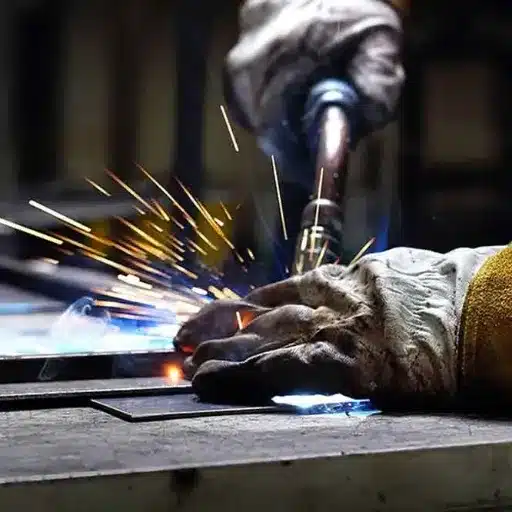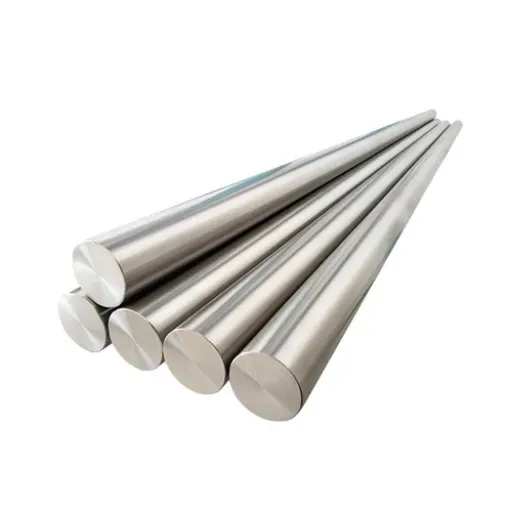The welding of stainless steel is one of the standard industrial processes that need accuracy and caution—considering how this process affects the environment, and people’s health is just as important. While welding, the melting of various chemical components occurs after applying heat, which is dangerous in some cases. One of the more alarming issues is forming the exceedingly hazardous compound called hexavalent chromium, which poses a grave danger for welders and everyone nearby. In this blog post, I will analyze how hexavalent chromium is formed while welding stainless steel, the possible health problems it can create, and how to reduce exposure to this chemical. By being aware of these details, welders and occupational safety professionals can significantly improve risk management practices.
What are the Welding Fumes and Why are They Dangerous?
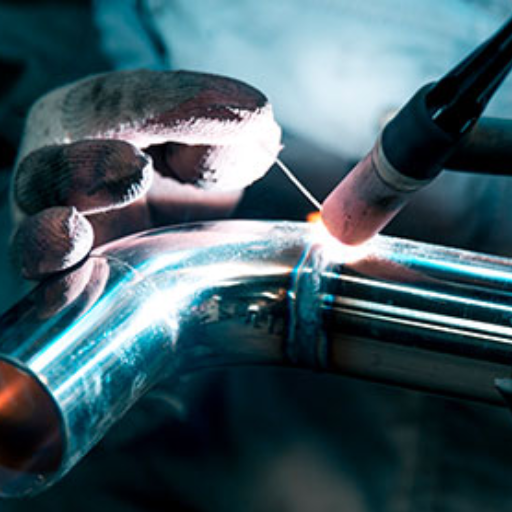
The harmful chemicals emitted during welding comprise a little bit of everything, such as silicates, metallic oxides, and even fluorides fused. Fumes that can be deemed dangerous are formed when a specific construction metal is heated to insane temperatures above their boiling point. Rest assured, these dangerous fumes contain very harmful compounds such as manganese, nickel, and hexavalent chromium. Using welding equipment without proper masks or ventilation will result in grave health issues such as damage to the lungs and respiratory system or even worsening the chances of cancer. The danger lies not only in the mouth or nose but also through contact with the skin, which can affect the body in the long run.
Understanding the Composition of Welding Fumes
I have discovered that welding fumes are a mixture of tiny particles formed when the metal being worked on is melted and vaporized during welding. The composition of these fumes is highly dependent on the processes’ materials. For example, if stainless steel is welded, chromium and nickel fumes will probably be present; both are dangerous. Mild steel welding also produces fumes, such as iron oxide; however, the health risks may be lower than those of stainless steel. I have also learned that electrode flux coatings contribute to more toxic compounds such as manganese and fluorides. Welding is always dangerous. These compounds have particular dangers, which include respiratory irritation, systemic toxicity, or carcinogenic properties.
Health Risks Associated with Welding Stainless Steel
Electric arc welding of stainless steel creates dangerous fumes and particles due to high temperatures and material-specific components. Concern for releasing hexavalent chromium greatly exceeds the fines due to inflammation. Indeed, we know that chromium is a hazardous cancer that causes lung, nasal, and sinus cancer as well as damage to the kidneys. Such a concern is met when welding with every chromium alloyed fan because, in his work, hexavalent chromium emerges as a result of oxygen action over chromium, which is part of stainless steel, and its concentration surpasses the permissible level due to the lack of enough controlling parameters.
Aside from the fact that nickel fumes are released and categorized as a group one carcinogen by the International Agency for Research on Cancer (IARC), Ghosn claims that there is a significant threat. Chronic respiratory illnesses and skin inflammation or irritation problems like allergic contact dermatitis may develop after long-lasting breathing exposure to nickel fumes. Welded fumes may involve manganese, which notoriously has been connected with neurological destruction so severe that it can be referred to as manganism, including its version of Parkinson’s illness.
Some technical measures, such as local exhaust ventilation systems, are sufficient to reduce exposure risks, such as breaking the occupational exposure limits (OELs) set for chromium (5 microgrammes per meter cubed as per OSHA PEL), nickel (1 milligram per meter cubed as ACGIH TLV), and manganese (0.02 milligrams per meter cubed as respired fraction ACGIH TLV). When engineering solutions are insufficient, personal protective equipment such as powered air-purifying respirators (PAPRs) or NIOSH-approved masks are required.
Using other low-smoke welding materials and optimizing the welding parameters further by lowering the current, controlling the arc length, and lowering the amount of heat used during the welding can significantly reduce the amount of fume gas produced. Exposure and health checks should be regularly monitored to meet the requirements and protect the employees’ health in stainless steel welding places.
How Welding Operations Contribute to Respiratory System Issues
Potential respiratory system ailments can stem from welding operations due to inhaling hazardous fumes and gases released during the operation. These emissions can contain toxic compounds like hexavalent chromium, for which welding is regarded as a significant source, alongside manganese and nickel. These poisonous compounds may lead to the initial irritation of the respiratory tract and, over time, result in chronic issues such as bronchitis or pneumoconiosis. Long-term exposure can result in serious problems such as lung cancer, especially if there is no ventilation or respiratory safeguard in place. In any case, compliance with safe work methods and frequent monitoring can mitigate these risks.
What Toxic Substance is Released When Welding Stainless Steel?
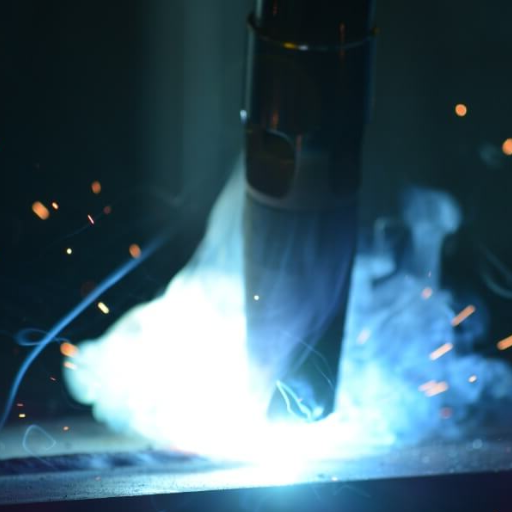
When welding stainless steel, hexavalent chromium (Cr(VI)) is the foremost toxic component emitted. This specific compound is produced due to the welding process because of the reaction of oxygen with chromium in stainless steel at elevated temperatures. Hexavalent chromium, as is well known, is a carcinogen and, as such, comes with a lot of health-associated risks, such as skin irritation, respiratory damage, and a high likelihood of lung cancer development. Alongside this is the emission of Manganese and nickel fumes, which can adversely impact the neurological or respiratory system when inhaled over prolonged periods. Ensuring proper engineering controls such as PPE, grade ventilation systems, and other ergonomic protection can significantly minimize exposure to such dangerous compounds.
The Role of Chromium in Stainless Steel Welding
Stainless steel corrosion resistance is critical to chromium, which allows for its incorporation into the alloy during welding. While welding, chromium will precipitate as hexavalent chromium (Cr(VI)), which harms human health. This is considered a hazardous byproduct for welders. As a result, ventilation systems, enclosed welding environments, and adequate PPE are essential to control exposure. Practical welding helps prevent the discharge of poisonous substances and lessens the deterioration of the protective oxide layer of stainless steel.
How Hexavalent Chromium is Produced During Welding
Hexavalent chromium is formed during the welding process when both stainless steel and chromium materials are welded, causing their chromium constituents to oxidize due to the heat of the welding arc. This oxidation reaction transforms chromium into a more toxic Cr(VI) state. Arc welding processes like gas metal and shielded metal arc welding (GMAW and SMAW) are most likely to generate Cr(VI) as they have much higher working temperatures and more direct exposure to the materials. The welding arc temperature, which is often between 6,000°F – 10,000°F (3,315°C – 5,540°C), and the oxygen concentration in the environment can facilitate the formation of hexavalent chromium. To decrease the yield of Cr(VI), effective engineering measures must be implemented to control the arc temperature while limiting the oxygen available during welding.
Potential Health Effects of Hexavalent Chromium Exposure
Long-term exposure to hexavalent chromium poses dire health risks, especially over a sustained period. Respiratory complications are among the most significant effects; inhaling Cr(VI) particles can lead to nasal cavity inflammation, bleeding, and permanent damage to the nose tissue. Because it is a known carcinogen, Cr(VI) is linked to an increased likelihood of lung cancer through chronic exposure. Dermatitis, irritation, and even ulceration – more popularly known as ‘chrome ulcers’ – are all effects that stem from skin exposure to Cr(VI) compounds. Moreover, inflammation or damage can stem from direct contact with the eye. Knowing these risks aids in understanding why proper safety procedures, such as ventilation, personal protective equipment (PPE), and following the limits of occupational exposure, are vital in protecting workers’ health.
Is Welding Stainless Steel Dangerous to Your Health?
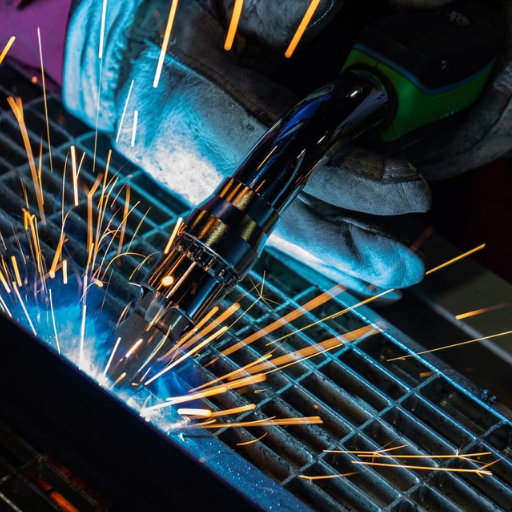
While working with stainless steel, health-related issues can arise from welding due to harmful elements being emitted. High temperatures may result in the emission of fumes that contain Hexavalent chromium (Cr (VI)) and nickel compounds. These elements are highly harmful and carcinogenic. Prolonged breathing of these fumes can cause grave issues such as skin/eye irritation and lung cancer. Respiratory problems may arise from these fumes as well. These dangers are mainly present when welders do not follow safety precautions. Welders should adhere to the set limits of occupational exposure and use protective equipment such as goggles and gloves in addition to ventilation systems to minimize these risks.
Assessing the Health Risks of Welding Stainless Steel
When welding stainless steel, the fumes released can be highly toxic, and exposing one’s self to those fumes can be very dangerous. For example, the electricity from welding can produce ozone, a known contributor to respiratory problems and damage to body parts such as the lungs and kidneys. The nickel fumes produced have been shown to irritate inhalation and have the potential to cause cancer in the long term. In addition, the incorporation of manganese creates the risk of damaging the central nervous system, leading to diseases such as Parkinson’s or even conditions that have tighter symptoms like the condition known as manganism. Breathing welding fumes can also cause nausea, lightheadedness, and feeling out of breath, thus feeling very sick. Thinkering knees and lungs can result in severe problems and constant shortness of air.
To manage these risks effectively, comprehensive safety protocols must be implemented. Using local exhaust ventilation, including fume extraction systems, is paramount to improving air quality and minimizing exposure to airborne pollutants. Respiratory masks with fume filtering capabilities, gloves, and welding helmets are examples of individual Protective Equipment (PPE) that provide specific levels of protection. Meeting occupational exposure limits and constantly evaluating workplace air quality are essential. Training and awareness campaigns support workers in adopting measures to reduce health risk exposure while ensuring their safety over time.
Comparing Welding Stainless Steel to Other Metals
Compared with other metals, the process of welding stainless steel is notable in terms of composition, thermal properties, and techniques required. Stainless steel is an alloy made primarily of iron, chromium, and nickel, which poses distinctive challenges associated with low thermal conductivity and a high coefficient of thermal expansion. These factors require more stringent control of the heat input to mitigate the risk of warping, distortion, and intergranular corrosion.
For example, stainless steel retains less heat and is less conductive than carbon steel, meaning carbon steel has a greater heat area. As a result, precision must be kept throughout the process when welding is carried out with stainless steel. TIG (Tungsten Inert Gas) welding is commonly practiced for such tasks due to its superior heat control capabilities.
Aluminum has its own welding problems, such as a low melting point, quick oxide layer formation on its exterior, needing a pre-weld clean, and inert gas shielding to avoid contamination. Moreover, aluminum’s thermal conductivity is higher compared to stainless steel, which makes the heat spread too quickly and can lead to poor joint penetration.
The table below shows a comparison of some important criteria for welding of stainless steel, carbon steel, and aluminum:
| Parameter | Stainless Steel | Carbon Steel | Aluminum |
|---|---|---|---|
| Melting Point (°F) | ~2,500 | ~2,600 | ~1,200 |
| Thermal Conductivity | ~16 W/mK | ~50 W/mK | ~235 W/mK |
| Thermal Expansion | High | Moderate | Very High |
| Preferred Technique(s) | TIG, MIG, Stick | MIG, Stick | TIG, MIG |
| Shielding Gas | Argon or Helium | Typically CO₂/Argon | 100% Argon |
| Pre-Weld Cleaning | Minimal (removing oxides) | Minimal | Essential |
Also, when choosing the filler material, stainless steel needs to be matched or compatible in terms of corrosion resistance with the base metal. Appropriate post-weld treatments, such as passivation or pickling, might also be necessary to replace the chromium oxide layers and preserve the stainless steel welds.
As a rule of thumb, stainless steel is much harder to weld than carbon steel or aluminum; however, the joints are stronger and tougher, making stainless steel the preferred choice for demanding applications requiring corrosion resistance and durability.
How Can You Reduce Exposure to Harmful Welding Fumes?

Welding also poses serious risks to the workers’ health, so adequate fume extraction and ventilation devices should be installed in the working area to prevent exposure to hazardous particles. Welders also need to use correct personal protective clothing respirators for welding. Changing to other consumables that produce less welding fumes and lowering welding parameters like voltage and amperage will help reduce the fumes. Choose welding methods that produce less fume, such as TIG welding, rather than the flux-cored arc welding known for producing high amounts of fumes. Proper maintenance and inspection of welding equipment will enhance functionality while supporting safety regarding harmful welding fumes.
Effective Ventilation Strategies for Welding Environments
Adopting appropriate ventilation systems in welding workplaces is crucial for controlling airborne pollutants and ensuring the worker’s health and safety. Effective ventilation reduces the welding fume concentration by diluting or capturing the welding fume at its source. Usually, there are three main types of ventilation systems used in welding:
- Natural Ventilation: This method can work efficiently in outdoor or open areas where the wind volume is high. However, it is insufficient in closed areas or confined spaces with minimal air flow.
- Local Exhaust Ventilation (LEV): Overhead hoods and ductwork ventilate most fumes from the welding area to ensure the fumes do not enter the workspace, which is referred to as LEV systems. Important variables include:
- Capture velocity (the minimum speed of airflow to capture fumes): Average of 100–150 feet per minute (fpm) if used effectively.
- Airflow rate: The device often has to function with an airflow of 100 to 200 cubic feet per minute (CFM), depending on the type of work and material.
- General Ventilation: Workstation fans or HVAC units with wide-reaching airflow that contaminate the workspace are referred to as General Ventilation.
- Air exchange rate: To eliminate fumes, a minimum of 5–10 changes of air per hour are required.
- It does not work as effectively with high levels of pollutants or hazardous substances.
Like most environments centered around welding, the preferred approaches prescribed by both OSHA and NIOSH guidelines should be employed to the maximum degree. It is essential to keep the exposure levels for harmful substances below PEL (Permissible Exposure Limits). Continuously monitoring air quality, thorough maintenance of the system, and operator training are critical in sustaining the strategies put in place to improve ventilation.
Choosing the Right Personal Protective Equipment (PPE)
Every welding job demands reliable, vetted methods that guarantee safety and adherence to industry standards. PPE (Personal Protective Equipment) is one of those aspects that significantly impacts safety. My focus in a selection of Personal Protective Equipment centers more around an appropriately rated welding helmet for the job at hand that would incorporate auto-darkening features to protect my face and eyes from ultraviolet and infrared fumes. Clothing is equally important, and here, I prioritize flame-resistant clothing, including jackets or leather aprons that shield the wearer from sparks and heat. Heavy-duty welding gloves are essential as they protect my hands thermally from hot objects and abrasions. Steel-toed boots protect my feet from heavy falling objects. As for breathing harmful smoke, proper protection is needed, such as an N95 mask or powered air-purifying respirators (PAPRs); again, mask choice varies with the level of exposure. In conclusion, PPE is chosen per the particular welding activity and adopted risks associated with the activity to achieve a safe working environment.
Implementing Safe Welding Practices to Minimize Exposure
To complete a job safely, proper ventilation must be performed, and ventilation systems should be set to a minimum of 2000 CFM (cubic feet per minute) for each welder. Alternatively, local exhaust systems may be used if they meet Gregory’s standard. Dangerous fumes during welding operations should also be controlled by scrutinizing and serviceable gas-burning equipment. Proper guarding of burners should be performed to avoid uncontrolled gas leaks that can burn hazardous materials. Welding equipment should also be serviced to arrest leaking gas so no harm can be inflicted while burning necessary welding fumes. Supervision of material safety data sheets (MSDS) is also performed in the welding process. Coatings that contain cadmium or lead are avoided whenever it’s most practical when welding pertains to protective coverings. Frequent safety education is geared towards known practices and other practices that require attention that may develop while welding. Following these practices will eliminate hazards and ensure compliance.
What Regulations Does OSHA Have for Welding Stainless Steel?
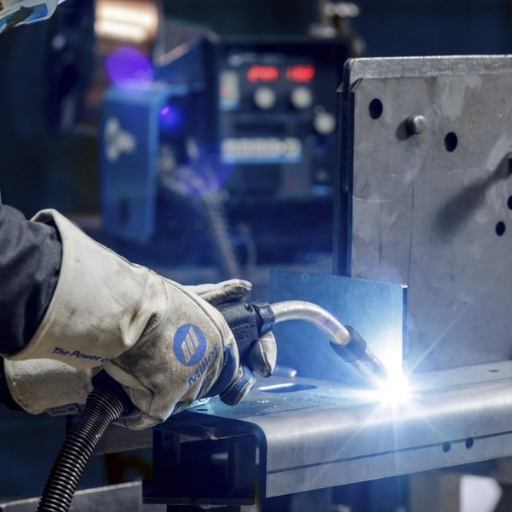
The OSHA standard for welding stainless steel primarily revolves around controlling exposure to hexavalent chromium, an occupational carcinogen released due to welding stainless steel. Under OSHA’s standards (29 CFR 1910.1026), an employer must ensure that a worker exposed to hexavalent chromium for 8 hours is exposed to no more than five micrograms per cubic meter of airborne hexavalent chromium. Some compliance actions involve installing proper ventilation systems like general or local exhaust ventilation and providing PPE, like respirators, where necessary. Employers must also carry out air monitoring for potentially overexposed employees, perform medical surveillance for those who may have been overexposed to levels needing medical attention, and instruct employees on the dangers of hexavalent chromium exposure during the regulation training. These actions promote the well-being of the welders and their workplace safety.
Understanding OSHA Guidelines for Welding
I strive to automate welding practices in compliance with OSHA standards by implementing control measures. These control measures include keeping harmful agents such as hexavalent chromium at the Permissible Exposure Limit (PEL) of 5 micrograms per cubic meter within an eight-hour workday. Attainment employs engineering controls, including local exhaust ventilation, issuing respirators as part of personal protective equipment, and air sampling. There are also medical surveillance programs for workers at risk for exposure above normal levels, and all employees receive training on the relevant issues and how to protect themselves. All these measures are essential for compliance and protecting our employees’ health and safety issues.
Compliance with Occupational Safety and Health Administration Standards
Keeping up with checklists for worker site safety, risk avoidance, and OSHA regulations requires a more complex level of inter-managerial supervision in compliance with standards. For welding industries, the key points include controlling employee exposure, safe workplace practices, and correct equipment usage.
These should include, but are not limited to:
- Internal Health/ Environment Air Quality Standards:
- Contain hazardous fumes or gases, including but not limited to hexavalent chromium fumes, within the boundaries of OSHA’s PELs and TWA limits. The limit for hexavalent chromium is 5 µg/m³ over an eight-hour time-weighted average.
- Accomplished with Local or Workplace Engineering Controls:
- Satisfy the PEL by installing local exhaust ventilation systems designed to capture at least 95% of airborne contaminants from welding.
- Maintain airflow with a minimum rate of 100 LFM at the capture point.
- Personal Protector Equipment:
- In cases where engineering controls fail to diminish exposure adequately, respirators that meet OSHA and NIOSH standards should be provided.
- Engage ANSI Z87.1 compliant welding helmets and face shields with FR-rated garments for protection from heat and sparks.
- Hazard Communication:
- Inform and train workers concerning the welding materials and weld fumes according to OSHA’s Hazard Communication Standard (HCS) [29 CFR 1910.1200].
- Keep Safety and Data Sheets (SDS) for all materials potentially used in welding processes.
- Fire Prevention and Housekeeping:
- By OSHA 1910.252(d), ensure the removal or covering of combustible items within the 35-foot area surrounding welding activities.
- Make sure the work area is equipped with fire extinguishers and that the area is regularly checked for compliance.
- Medical Surveillance:
- Provide initial and routine medical examinations for employees who may suffer from chromism disease or manganism to notice abnormalities at an early stage.
All welding activities are potentially dangerous, but with a proper combination of engineering controls, PPE, procedural training, and medical surveillance, compliance can be maintained and risks mitigated.
Steps to Ensure Occupational Safety in Welding Operations
- Engineering controls
- I ensure that adequate ventilation systems are in place to mitigate the harmful emission of fumes and gases. To minimize contaminant emissions, local exhaust ventilation is located adjacent to the welding point.
- I employ non-flammable barriers to guard other nearby workers from sparks and splatter.
- Work Personal Protective Equipment (PPE)
- I have designated protective clothing such as fire-resistant coveralls, welding helmets with proper filter lenses, gloves, and safety boots, and I put them on.
- Anytime noise is greater than OSHA’s permissible levels under 29CFR 1910.95, hearing protection must be worn.
- Workplace Inspections:
- Operational safety inspections of welding tools are conducted routinely to identify signs of safety problems. Any broken tools are fixed or replaced as soon as possible.
- I inspect the work site for fire prevention compliance and access combustibles to be removed or covered.
- Training and Compliance
- Active participation in some safe under OSH welding programs is mandatory for me.
- On a regularly scheduled basis, I review safety precautions and ensure that all measures are taken to provide an adequately safe working environment.
By adhering to these steps, I effectively manage hazards and promote a culture of safety in welding operations.
References
- SteelPro Group: Toxic Substances Released During Welding Stainless Steel
- Henlex: Welding Fume Hazards – Stainless Steel & Hexavalent Chromium
- Quora: Is it Dangerous to Weld Stainless Steel?
Frequently Asked Questions (FAQ)
Q: What toxic substance is released when welding stainless steel?
A: Chromium, specifically in its hexavalent state, is a highly toxic substance released while welding stainless steel. This can be harmful if inhaled.
Q: Why is stainless steel welding fume considered dangerous?
A: Stainless steel welding fumes are considered dangerous because they contain harmful fumes like hexavalent chromium, which are associated with serious health issues such as lung disease and metal fume fever.
Q: What health issues are associated with welding fumes?
A: Health issues associated with welding fumes include metal fume fever, lung disease, and serious health problems due to the inhalation of highly toxic substances like hexavalent chromium.
Q: How can exposure to welding fumes be reduced?
A: Exposure to welding fumes can be reduced by using proper ventilation systems, wearing protective equipment, and employing safe welding techniques. It is crucial to reduce exposure to hexavalent chromium and other toxic fumes.
Q: What is metal fume fever?
A: Metal fume fever is a condition caused by inhalation of certain metal fumes, including those released during welding. Symptoms include fever, chills, shortness of breath, and muscle aches.
Q: Why must precautions be taken when welding in confined spaces?
A: Precautions must be taken when welding in confined spaces. The concentration of harmful fumes can be higher, increasing the risk of inhalation and serious health issues.
Q: Are there specific welding techniques that can minimize harmful fumes?
A: Yes, using welding techniques such as stick welding and ensuring adequate ventilation can help minimize the release of harmful fumes during the welding process.
Q: What happens during prolonged exposure to welding fumes?
A: Prolonged exposure to welding fumes can lead to chronic respiratory issues, lung disease, and increased risk of cancer due to continuous inhalation of toxic fumes.
Q: Is welding galvanized steel also harmful?
A: Yes, welding galvanized steel can be harmful due to the fumes released, which can contain zinc oxide and other toxic substances that are dangerous if inhaled.

